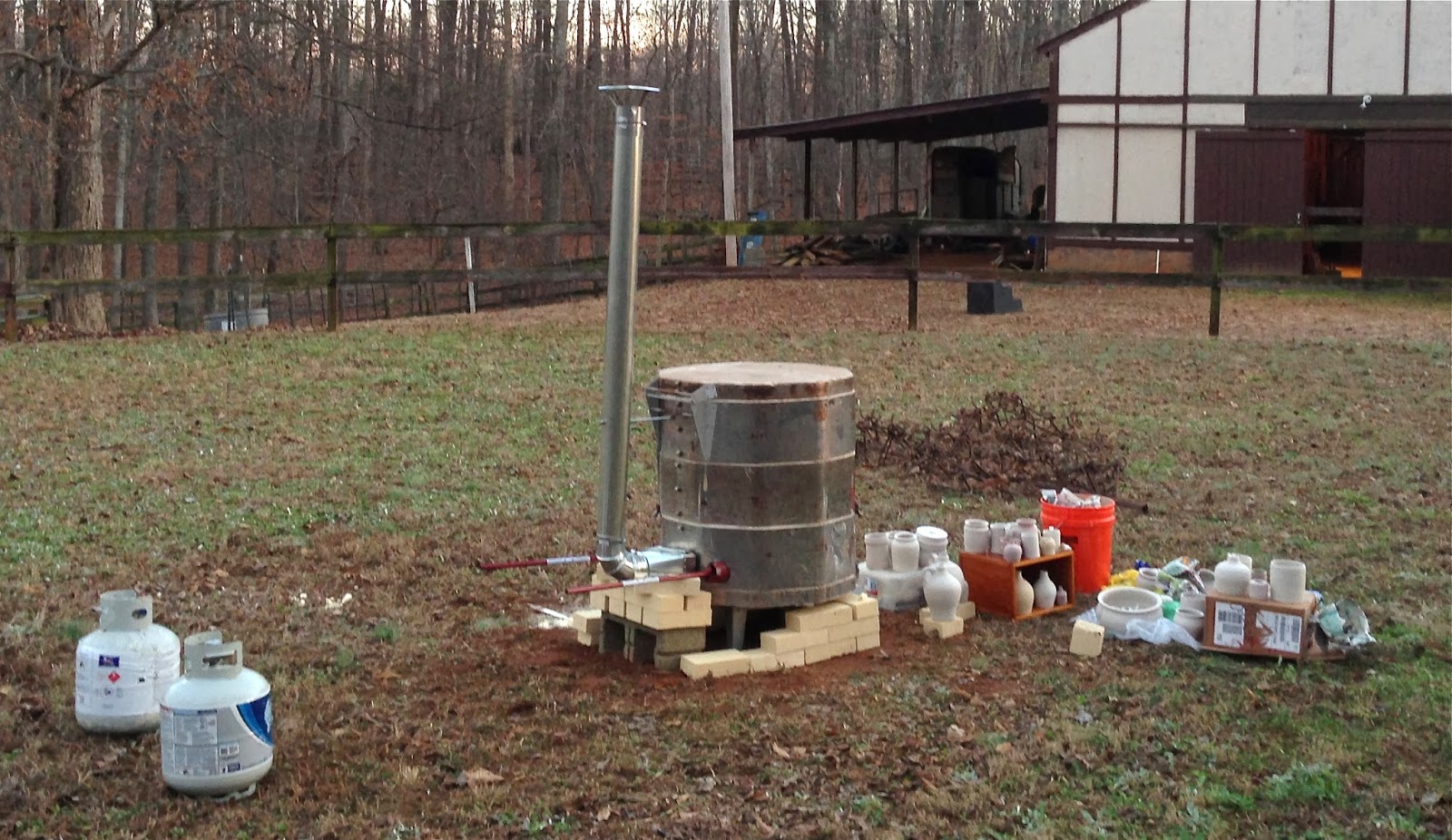 |
| Kiln as it was set up for first firing. Always check propane connections for leaks with a bit of soapy water. |
With only a half a day drying time for the pieces I’d dipped
in the ash glaze, I started the firing at 1 o’clock at very low flame, just
enough to keep the torches from going out. About two hours later, I turned it
up to a strong yellow flame and an hour on, to a loud blue flame. I heard no
cracking or pinging from inside the kiln so everything seemed to be doing fine.
 | |
| Warming up on low flame- 2 hrs |
 |
 |
| After the 15lb tanks ran out, I increased the pressure on the 40lb one and tried to seal the second fire port with a brick. I turned it back again pretty quick... |
I had hoped to see cone 6 bending after four hours or at
least five hours but the kiln seemed to level off and the small propane tanks
kept running strong. Well, strong, they weren’t- the pressure change was so
gradual that it wasn’t till I kicked one in the dark that the contents
momentarily pressurized and suddenly the torches reminded me how loud they had
been at first. I went ahead and shut off the right tank and unscrewed the line,
substituting the new 40 lb. tank and relighting. All seemed to going well again
and I alternated between reading in a chair by the kiln and carrying red bricks
over to make a floor around the kiln to keep rain runoff away. Despite getting
strong reduction flames out the chimney and later out every crevice in the
lower 2/3s of the kiln, the cones all remained standing straight by 10pm (9
hours in) at which time I gave up and cut the valves to half and then off
completely after 30 minutes. Total gas used was a little under 5 gallons from
the 40lb. tank and 7 gallons between the two 15 lb. ones, so 12 gallons all
told.
I waited until the next afternoon to open the kiln and see
how the pots had fared. The result was as expected; they were all well-bisqued
but the ash glaze was just a dry flaky crust and the pure ash I’d dusted the
rims with looked like burnt coffee grounds. The latter could be wiped off
leaving a lightly brown stain.
Well, that's the nature of experiments. Next- to figure out why it wasn't making it higher.













